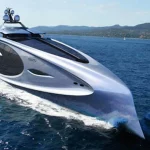Today, Vidello Productions takes a look at 10 expensive relics associated with the Prophet Muhammad.
10. The Prophet’s Mosque
The third mosque built in the history of Islam, it is now one of the largest mosques in the world and is currently the second-holiest site in Islam.
Second only to the Great Mosque in Mecca, which we will get to a bit later, the Mosque is always open regardless of the date or time.
The site was originally adjacent to Muhammad’s house when he settled there after his migration from Mecca to Medina in 622.
He helped in the construction of the Mosque, which included some heavy work and the original building was open air with the mosque serving as a community center, a court, and a religious school.
After considerable expansion and renovations, the Mosque now incorporates the final resting place of Muhammad and one of the most notable features of the site is the Green Dome in the south-east corner.
In 1974, King Faisal added 40,440 square meters to the Mosque and it was again expanded during the reign of King Fahd in 1985.
Twenty seven courtyards and a number of escalators were installed to help 600,000 people who visit the Mosque each month.
While we can’t put a price tag on the Mosque, in September 2012, a project was announced to once again expand the Mosque and it carried a price tag of $6 billion.
9. The Dome of the Rock
Initially completed in 691 CE, this large Islamic shrine is located on the Temple Mount in the Old City of Jerusalem.
The shrine is built on the site of the Second Jewish Temple, destroyed during the Roman Siege of Jerusalem in 70 CE.
The site’s great significance for Muslims derives from traditions connecting it to the creation of the world and to the belief that the Prophet Muhammad’s Night Journey to heaven started from the rock at the center of the structure
Today the shrine is a UNESCO World Heritage Site and has been called Jerusalem’s most recognizable landmark.
The golden dome was refurbished in 1993 following a donation of $8.2 million by King Hussein of Jordan who sold one of his houses in London to fund the 80 kilograms of gold required.
8. The Holy Mantle
The Holy Mantle, or Burda, is an item of clothing that was given as a gift by Muhammad to an Arabian Poet in the 7th Century and was later sold by his children to the founder of the Umayyad Dynasty.
Today it is inside the Chamber of the Blessed Mantle and is described as a white coat made of goat’s hair with large sleeves, or a cream fabric with black wool lines.
The Mantle is kept in a gold chest and is housed alongside the Holy Banner of Muhammad under a silver latticed canopy.
The mantle is almost two yards long and was traditionally visited by the sultan, his family, and the court during a ceremony on the fifteenth day of Ramadan each year.
7. The Sacred Seal
Allegedly the replica of a seal used by Muhammad on several letters sent to foreign dignitaries, it is located in a large museum in Istanbul, Turkey.
Reported to be kept in a small ebony box in a niche cut in the wall by the foot of a divan in the relic room, the seal itself is encased in crystal, approximately 3″x 4″, with a border of ivory. The seal has been used as recently as the 17th century to stamp official documents and according to Muslim historical traditions, the original seal was lost in a well in Medina.
The authenticity of the seal is dubious and has been contested almost as soon as their discovery.
6. The Beard of Muhammad
Said to have been trimmed from Muhammad’s face by his favored barber Salman the Persian, this relic is located inside a museum in Istanbul, Turkey.
The beard is currently on display to the public, and thousands of people travel to see it each year.
The beard was originally grey; however, it is reported that Muhammad dyed it red, and would have made him look younger in appearance.
Individual hairs were taken away in the early days; however, most of the relic has survived, even though relics have no official sanction in Islam.
5. Muhammad’s Bowl
Used by Muhammad while he was alive, this bowl is roughly 1400-years-old, kept by his daughter Fatimah and her husband Ali.
After their death, the bowl was kept by their children Hasan and Hussein and was then passed from generation to generation by descendants of Muhammad until it finally reached Britain.
On 21 September 2011, the bowl was delivered to Chechnya and now is kept in the “Heart of Chechnya” Mosque in Grozny.
4. Battle Standard of Muhammad
Believed to have served as the curtain over the entrance of his wife Aisha’s tent, this relic was acquired by Selim I of the Ottoman empire who had it taken to the Grand Mosque of Damascus where it was to be carried during the annual Hajj pilgrimage to Mecca.
Another ruler of the Ottomans, Murad III had the Standard sent to his army in Hungary as an incentive for them to fight better sometime between 1574 and 1595.
In 1595, Mehmed III had it brought to Turkey, where it was sewn into another standard, and together they were encased in a rosewood box, inlaid with gems including tortoiseshell and mother of pearl.
The last time the standard was on display was during the outset of Turkey’s entrance into World War I, and its whereabouts are currently unknown.
3. Letters of Muhammad
Muhammad decided after the formation of Islam to send letters to many rulers of the world, inviting them to Islam.
He is said to have, according to traditional Islamic historiography, sent ambassadors with such letters to the Caesar of Byzantium, the ruler of Persia, the ruler of Egypt, the governor of Syria and the ruler of Bahrain at the time.
The original letters were found in several places across the world including Egypt in 1958, Karachi in 1983 and one which was found in New Delhi sometime in 1998.
2. Swords and Armour
Muhammad owned nine swords, all of which still exist in some form today and eight are located in Turkey’s biggest religious museum with the 9th located in Cairo, Egypt.
The Ar-Rasub is said to be the weapons of the house of Muhammad and was kept among his family, later being preserved in Turkey and said to have gold circles embedded within and a blade of 140cm in length.
Another sword, named Al-Battar is nicknamed “sword of the prophets.” It is inscribed in Arabic with the names of David, Solomon, Moses, Aaron, Joshua, Zechariah, John, Jesus, and Muhammad.
With regards to armor, he owned seven pieces along with two helmets made of iron, adorned with copper and several shields, with him wearing three long shirts during battle.
1. Great Mosque of Mecca
Known as the holiest place in the world of Islam, millions of pilgrims travel to Mecca each year during the Hajj Pilgrimage.
The Great Mosque of Mecca, also known as the Al-Haram Mosque, is the largest mosque in the world and surrounds the Islamic Qiblah.
One of the Five Pillars of Islam requires every Muslim to perform the Hajj, one of the largest annual gatherings of people in the world, at least once in their lifetime when able to do so.
The Mosque sits in front of the tallest clock tower and the fourth tallest structure in the world and is open year round.
The buildings have undergone a large number of renovations in recent years mainly due to the number of people visiting the holy site.
The first major renovation between 1955 and 1973 saw four more minarets were added, the ceiling was refurbished, and the floor was replaced with artificial stone and marble.
The second Saudi renovations under King Fahd between 1982 and 1988, added a new wing and an outdoor prayer area to the mosque.
Finally, the third Saudi extension between 1988 and 2005 saw the building of more minarets, the erecting of a King’s residence overlooking the mosque and more prayer area in and around the mosque itself.
Safety calls saw the installation of heated floors, air conditioning, escalators, and drainage systems after a number of accidents involving large groups of people resulted in crushing deaths.
The Mosque is currently undergoing a fourth expansion to increase its capacity to 2 million and in 2016 it was estimated that Great Mosque had cost $100 billion.
Thanks for reading this article on 10 Expensive Relics Associated With The Prophet Muhammad. Please throw a like on the article to support the ongoing series, comment down on the video if you think I missed anything, and subscribe for more top list videos coming soon.








